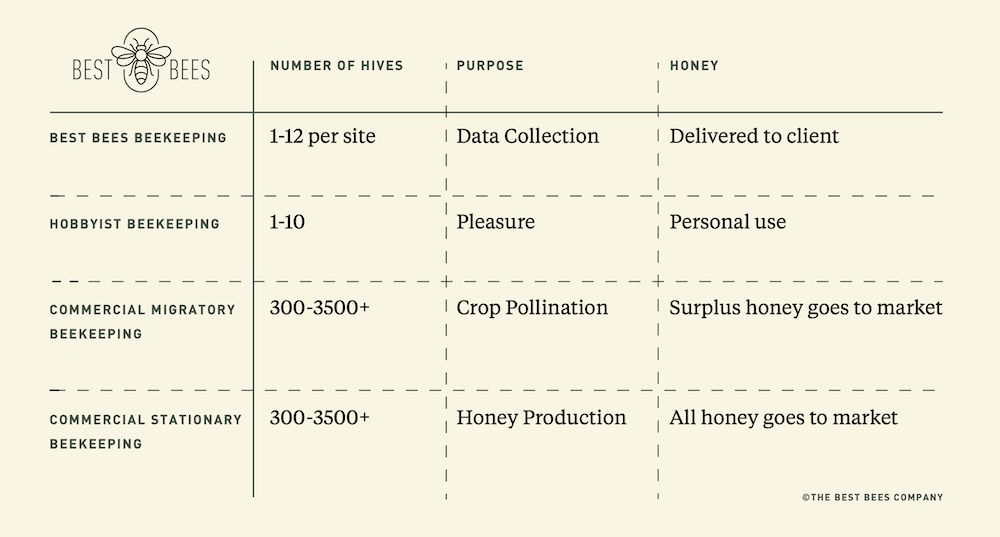Over the past few years, it has become increasingly expected that large companies and their stakeholders invest properly and proudly towards a more sustainable future that benefits everyone. Now, it is the inherent responsibility of large organizations to affect positive change both locally and globally, all while adapting to new practices of doing so.
Are you curious about innovative and creative ways to approach a corporate sustainability program for your business? In this blog, we’re breaking down the principles of sustainability, and how businesses and corporations can establish themselves as forward-thinking leaders with a strategic and impactful sustainability plan that puts our environment first.
Table of contents:
- What is Corporate Sustainability?
- What are the principles of sustainability?
- How does corporate sustainability differ from corporate social responsibility?
- Why is having a corporate sustainability plan important?
- Simple steps to creating a corporate sustainability plan
- Types of corporate sustainability goals
- Examples of Innovative Corporate Sustainability Initiatives
- How Your Corporation Can Begin Its Sustainability Initiative
- FAQs
What is corporate sustainability?

When corporations think of the term “sustainability”, protecting the environment often comes to mind. While this is a core element of corporate sustainability, there is much more to it than that. Corporate sustainability encompasses a business’ ability to properly invest in the wellbeing of our society and environment at large.
What are the principles of sustainability?
When it comes to creating your own corporate sustainability plan, it’s important to understand what the word “sustainability” really means. The idea of sustainability is founded on three key principles that make up the overall impact that one corporation can and should have.
Environmental Sustainability
Environmental sustainability refers to the impact that your business can have on the environment, so when creating a sustainability plan, consider what specific strategies you can implement to protect the environment, like lowering your carbon footprint, using sustainable products, or even giving back to communities or organizations that focus on environmental conservation efforts.
Social Sustainability
According to The Impact Investor, social sustainability focuses on a corporation’s ability to show awareness of how it affects any citizens who may actively or passively interact with it. This includes how the staff is treated with pay, benefits, and overall work balance, how transparency can foster a positive relationship with stakeholders, as well as a corporation’s ability to practice good corporate citizenship.
Economic Sustainability
The third key principle of sustainability is economic sustainability, which “refers to practices that support long-term economic growth without negatively impacting societal, environmental, and cultural aspects of the community”. Examples of economic sustainability in action include making a donation on behalf of your corporation to a relevant non-profit organization or committing to the use of ethically-sourced materials.
How does corporate sustainability differ from corporate social responsibility?
While the two are closely related, corporate sustainability and corporate social responsibility are two different ideas. Corporate social responsibility is an overarching term that refers to a company’s commitment to positively impact our society or environment. Corporate sustainability is the “how”, or the strategy that this company implements in order to advance these specific causes.
Why is having a corporate sustainability plan important?
Now more than ever, corporations are expected to not only have a purpose but to be transparent in how they achieve their purpose, too. Consumers and stakeholders want to know the work that companies are putting in to make our world a better place, and will champion them if they do!
A recent global study even found that consumers are four to six times more likely to purchase, protect, and champion purpose-driven companies.
The importance of having a corporate sustainability plan in place for your business is two-fold: with this plan, your business is able to truly have an impact on the advancement of our environment and society, and in return, your community will view you as a thoughtful leader that they want to support.
Simple steps to creating a corporate sustainability plan
Determining what type of societal and environmental impact your corporation wants to have is no easy feat. However, creating a corporate sustainability plan first will allow you to not only determine your vision for the future, but it will also help you set measurable goals, receive buy-in from your staff and stakeholders, and continue improving along the way.
The Green Business Bureau has identified 10 simple steps for creating a corporate sustainability plan, and the process is as follows:
- Step 1: Define your corporation’s vision, mission, and values
- Step 2: Create a sustainability committee or green team that can take ownership of the development and implementation of your plan
- Step 3: Benchmark and assess your current sustainability performance to gauge where improvements and impacts can be made
- Step 4: Engage your employees and get them excited about the steps your corporation is taking to positively impact the environment and society
- Step 5: Plan and set measurable goals
- Step 6: Implement your plan, establish and communicate new policies and practices with your employees and stakeholders, and communicate this plan with your consumers
- Step 7: Leverage the GBB Scorecard to track the progress of your corporate sustainability plan and measure your results
- Step 8: Analyze your results, be transparent with your team, and compare them to the goals and benchmarks you previously established
- Step 9: Celebrate and communicate your accomplishments on an internal and external scale
- Step 10: If you’re ready, work to receive a relevant Certification or continue making improvements
Types of corporate sustainability goals
The negative impacts of climate change have only increased over the years, and corporations now have a responsibility to help address this issue.
In the 2022 Global Risks Report, 89% of respondents perceived the short-term outlook of our world to be volatile, fractured, or increasingly catastrophic. Additionally, 84% of respondents expressed negative feelings about the future—that is, they were “concerned” or “worried”.
If your corporation is actively creating a sustainability plan, here are a few measurable goals to keep in mind:
- Pollution Prevention: While pollution can be found in our air, water, and soil, there are preventative environmental measures that corporations can take. These can include utilizing non-toxic materials or ingredients or reducing the amount of packaging within your products.
- Resource Conservation: This refers to the practice of using resources such as water, energy, and raw materials efficiently and ethically. Ways that your corporation can measure the number of resources you are conserving include installing energy-efficient lightbulbs in your workplace or encouraging your staff to be more mindful of the resources they use.
- Waste Reduction: Many corporations strive to become zero waste, but even reducing the amount of waste that your business produces can help make a large impact. This can be done by limiting your use of single-use materials, with the goal of sending less waste to landfills.
- Zero Emissions: The global surface temperature for January 2022 was the sixth-highest temperature for January since global records began, and the issue of global warming can no longer be ignored. Corporations can commit to lowering their carbon footprints (reducing carbon dioxide emissions), which will in turn help curb the increasing temperatures on Earth.
- LEED and Green Building: According to the U.S. Green Building Council, LEED certification is a globally recognized symbol of sustainability achievement and leadership, and the goal of this certification is to create better greener buildings that help reduce contribution to climate change, enhance quality of life, and more. Did you know the USGBC awards LEED points for adding a pollinator habitat like data-yielding beehives to a commercial building?
3 Examples of Innovative Corporate Sustainability Initiatives
Although 90% of executives think sustainability is important, only 60% of companies have a sustainability strategy. Here are a few examples of innovative corporate sustainability initiatives that are aiming to make our world a better place.
Everlane’s Mission to Clean Up the Fashion Industry
Everlane, an American clothing retailer for modern essentials made the commitment to kick plastic use to the curb in 2018, and did so with what they called The Next Collective. Everlane worked with designers, scientists, students, and more to generate ideas on how to reduce the use of plastics in fashion, and funded this program with $100,000.
Three years after Everlane made its pledge to go plastic-free, the company announced that it had achieved a 90% reduction in its plastic use by 2021. To remove the remaining 10% of plastic, Everlane has shown transparency with its supply chain issues and is calling on the community to continue generating ideas for ways to remove virgin plastic for good.
Why Patagonia Is “In Business to Save Our Home Planet”
Patagonia Inc., the American sport and outdoor clothing brand operates worldwide, and is often one of the first companies that consumers think of when they imagine the word “sustainability”. While Patagonia has a plethora of sustainability initiatives that they have been dedicated to over the years, their Worn Wear program is one that gets the community involved.
Through this sustainability program, customers are able to repair, share, or even recycle their worn Patagonia products to their nearest retailer, allowing them to join Patagonia in reducing its environmental footprint. Plus, these customers who decide to trade in their items will receive credit towards their next purchase of a new or used garment!
National Grid Improves Environmental Value of Land With Pollinators
In September 2021, National Grid (one of the world’s largest publicly listed utility companies) committed to improving the environmental value of 10% of the land that they own by 2030. To do this, they enlisted the help of pollinators. National Grid partnered with The Best Bees Company to install and maintain two honeybee hives at their Northboro building. With this partnership, the bees that are managed by the team of scientists at The Best Bees Company will provide invaluable data about the health of pollinators, while promoting local biodiversity.
How Your Corporation Can Begin Its Sustainability Initiative
Let’s call it like it is: companies that wait to meet the standards of sustainability will soon be playing catch-up with their competitors. But if you haven’t noticed, people have always been fascinated by bees, and adding a data-yielding beehive to your plan is an impactful way to sweeten your sustainability efforts.
Observing bees often inspires innovation and influences designers and engineers to create buildings that increase connectivity to the natural environment in order to promote human health and well-being. Compared to most sustainability efforts, beehives are incredibly simple to implement and manage with the help of experts like The Best Bees Company. Plus, you know that your business is making an impact every day that helps lead to a greener future for us all.
Does your business want to learn more about how data-yielding beehives can enhance your corporate sustainability program? Read our latest white paper, Beehives for ESG Impact, for evidence that supports how beekeeping directly supports 10 of the UN’s Sustainable Development Goals.
Corporate Sustainability FAQs
Q: What is corporate sustainability?
A: Corporate sustainability refers to a business’ ability to properly invest in the wellbeing of our society and environment at large.
Q: What are the principles of sustainability?
A: There are three key principles of sustainability: Environmental, social, and economic sustainability.
Q: How do you create a corporate sustainability plan?
A: To create a corporate sustainability plan, The Green Business Bureau recommends the following steps:
- Define your vision, mission and values
- Create a sustainability committee or green team
- Benchmark and assess your current sustainability performance
- Engage your employees
- Plan, set goals and prioritize based on over 400 GBB initiatives
- Implement the plan, establish and communicate new policies and practices
- Leverage the GBB Scorecard to track progress and measure results
- Analyze your results and compare to goals and benchmarks
- Celebrate and communicate your accomplishments
- If you’re ready, get Certified or continue making improvements










